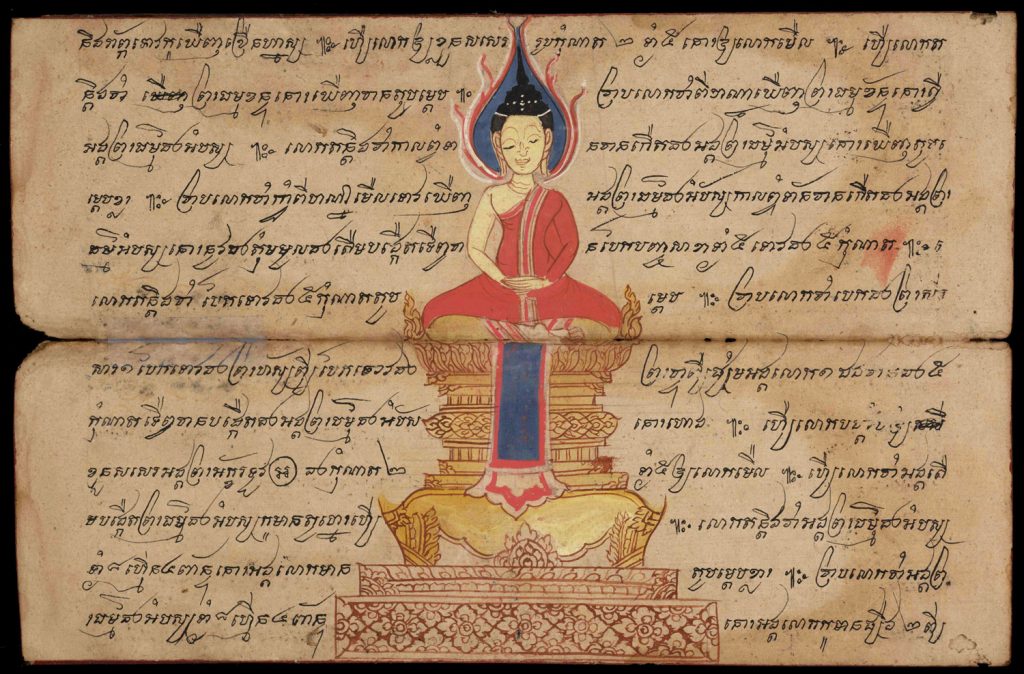In the Kampong Cham province of Cambodia, not far from a section of the Mekong River, a temple known as Wat Phum Thmei Serey Mongkol houses the most complete library of palm leaf texts in the country. Having outlasted colonialism and civil war when so many libraries did not, the library is a rare exception and a testament to the power of preservation. Scholars estimate that between 1975 and 1990 more than 95 percent of manuscripts in Cambodia disappeared, either through neglect or outright destruction at the hands of the Khmer Rouge. This is what makes the Wat Phum Thmei library so remarkable. No other library emerged from the Khmer Rouge era as unscathed.
Traditionally in Cambodia and Southeast Asia more broadly, Buddhist texts were etched onto palm leaves or inked onto even more delicate bark paper, which made them vulnerable to the ravages of insects, humidity, and fire. To protect the texts from loss, scribes would regularly recopy manuscripts, transmitting knowledge from generation to generation. Although manuscript production had largely ceased in Cambodia by the time the Khmer Rouge came to power in 1975, manuscripts remained crucial sources for Buddhist rituals, sermons, meditation instructions, traditional astrology, and medicine. Buddhist monasteries, which were the center of intellectual life in many villages, continued to hold extensive palm leaf libraries.
In full: https://tricycle.org/trikedaily/wat-phum-thmei-texts/




